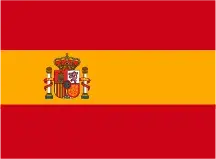The race to develop hydrogen in the country is facing challenges reminiscent of the first steps of solar photovoltaic energy.
This is how Emilio Nieto, director of the National Center for Hydrogen and Fuel Cells, describes it in conversation with Mobility Portal España.
“Mistakes are being made because of trying to move too fast,” he warns.
The technical and logistical challenges of this technology have become evident with the stagnation of some of the most important projects.
“Two decades ago, the cost of photovoltaic panels was considerably high, whereas now they are practically given away,” says Nieto.
And he emphasizes:
“This type of transition is what hydrogen needs: we cannot expect it to happen in six months, it is an emerging technology that must follow its natural course.”
The current situation of H2O reflects a market that, although promising, continues to struggle with technical and economic difficulties.
The projects in the country are ambitious, with approximately 15 initiatives underway that depend on various types of funding, both national, regional and European.
However, “only about 6%” of all projects have reached an advanced stage of development.
Nieto explains that the problem lies not only in financing, but also in the ability of marketers to fulfill “their promises.”
According to the expert, these are large projects that require a considerable amount of time to build, and currently “there is not enough global capacity to supply the necessary equipment.”
In many cases, this results in suppliers being unable to deliver on their agreed terms or the equipment delivered not meeting the agreed specifications.
“The technology exists and is mature, but it needs to be scaled up, it cannot be rushed,” he says.
How is the hydrogen market progressing?
The hydrogen market, especially green hydrogen, is emerging as a key element in the energy transition in Spain and Europe.
In this regard, industry experts point out that the goal of reaching 12 GW of electrolyser capacity by 2030 is ambitious but possible, provided certain obstacles are overcome.
These include the need for financial incentives, favourable regulation and the development of appropriate infrastructure.
According to EEE, in order to produce nearly one million tons of renewable hydrogen annually, it will be essential to consolidate public-private collaboration and promote demand in key sectors.
However, the rollout has started more slowly than expected.
The lack of clarity in regulation, coupled with delayed subsidies, has led to only a small number of projects reaching the Final Investment Decision (FID).
This is a challenge not only in Spain, but globally, since only 4% of the projects announced worldwide have reached this milestone.
Many fear that the speed with which progress is being made could compromise the quality and long-term sustainability of these projects.
It is therefore crucial to stimulate demand for renewable hydrogen to ensure the viability of the projects.
This involves not only developing more infrastructure, but also ensuring that there is a market willing to buy the H2O produced.
Currently, many potential consumers are reluctant to sign long-term purchase agreements, hoping for a drop in prices for this technology.
Despite the obstacles, significant progress has been made in regulation and financing in the last two years, both in Spain and in Europe.
At the regulatory level, a definition of what is considered renewable hydrogen has been established and binding consumption targets have been incorporated in the most recent update of the Renewable Energy Directive.
In addition, the first auction of the European Hydrogen Bank was held, which included three Spanish projects among the seven winners.
MITECO launches new aid for the sector
The President of the Government, Pedro Sánchez, has announced four aid programmes worth 2.3 billion euros to “accelerate the energy transition in areas such as green hydrogen”, among others.
The lines, which will be financed with funds from the Recovery, Transformation and Resilience Plan launched by the EU to accelerate the exit from the pandemic, will be managed by the Institute for Energy Diversification and Savings (IDAE).

Just over half of the budget, i.e. 1.2 billion euros, will be allocated to projects related to the production and consumption of green H2O in renewable H2O clusters or valleys.
This disbursement represents a step forward in support for this technology, which had previously received 300 million for 30 pioneering initiatives, 230 million for another 40 in the value chain.
As well as 794 million for seven IPCEI strategic plans (important projects of common European interest).
These will be located in Andalusia, Asturias, Castilla-La Mancha, the Basque Country, Murcia and Aragon.
According to the President of the Andalusian Government, Juanma Moreno, 27% of Spain’s green hydrogen initiatives are concentrated in Andalusia, with Huelva and the Bay of Algeciras as key points.








